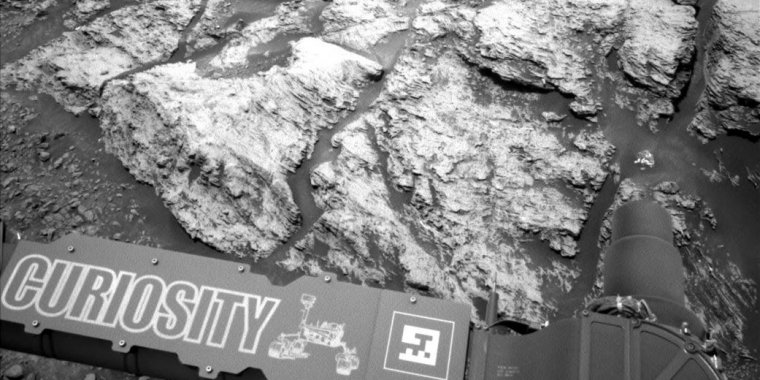| News / Space News |
Curiosity Detects Unusually High Methane Levels
This week, NASA's Curiosity Mars rover found a surprising result: the largest amount of methane ever measured during the mission - about 21 parts per billion units by volume (ppbv). One ppbv means that if you take a volume of air on Mars, one billionth of the volume of air is methane.

This image was taken by the left Navcam on NASA's Curiosity Mars rover on June 18, 2019, the 2,440th Martian day, or sol, of the mission. It shows part of "Teal Ridge," which the rover has been studying within a region called the "clay-bearing unit." Photo: NASA/JPL-Caltech
The finding came from the rover's Sample Analysis at Mars (SAM) tunable laser spectrometer. It's exciting because microbial life is an important source of methane on Earth, but methane can also be created through interactions between rocks and water.
Curiosity doesn't have instruments that can definitively say what the source of the methane is, or even if it's coming from a local source within Gale Crater or elsewhere on the planet.
The Curiosity team has detected methane many times over the course of the mission. Previous papers have documented how background levels of the gas seem to rise and fall seasonally. They've also noted sudden spikes of methane, but the science team knows very little about how long these transient plumes last or why they're different from the seasonal patterns.
The SAM team organized a different experiment for this weekend to gather more information on what might be a transient plume. Whatever they find - even if it's an absence of methane - will add context to the recent measurement.
Curiosity's scientists need time to analyze these clues and conduct many more methane observations. They also need time to collaborate with other science teams, including those with the European Space Agency's Trace Gas Orbiter, which has been in its science orbit for a little over a year without detecting any methane.
Combining observations from the surface and from orbit could help scientists locate sources of the gas on the planet and understand how long it lasts in the Martian atmosphere. That might explain why the Trace Gas Orbiter's and Curiosity's methane observations have been so different. (NASA)
YOU MAY ALSO LIKE



